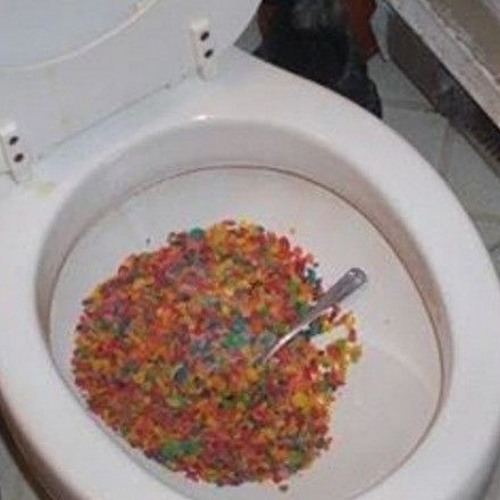Is it Practical to Dispose of Food Down the Toilet?
Is it Practical to Dispose of Food Down the Toilet?
Blog Article
How do you actually feel about Flushing Food Down the Toilet??

Intro
Many individuals are commonly faced with the issue of what to do with food waste, particularly when it concerns leftovers or scraps. One usual concern that arises is whether it's alright to flush food down the bathroom. In this short article, we'll explore the reasons that individuals might think about flushing food, the consequences of doing so, and different techniques for appropriate disposal.
Reasons why individuals may take into consideration purging food
Lack of awareness
Some people may not know the possible injury brought on by flushing food down the toilet. They might mistakenly think that it's a harmless technique.
Ease
Purging food down the commode may feel like a quick and easy option to getting rid of undesirable scraps, specifically when there's no close-by trash can offered.
Negligence
Sometimes, people might simply pick to flush food out of sheer idleness, without considering the effects of their activities.
Consequences of flushing food down the bathroom
Environmental influence
Food waste that winds up in rivers can add to air pollution and harm aquatic environments. In addition, the water made use of to flush food can stress water resources.
Plumbing concerns
Purging food can cause clogged pipes and drains pipes, triggering expensive plumbing repairs and troubles.
Types of food that should not be purged
Coarse foods
Foods with fibrous structures such as celery or corn husks can obtain entangled in pipelines and cause blockages.
Starchy foods
Starchy foods like pasta and rice can soak up water and swell, bring about clogs in pipelines.
Oils and fats
Greasy foods like bacon or food preparation oils ought to never ever be flushed down the toilet as they can strengthen and cause clogs.
Correct disposal techniques for food waste
Using a waste disposal unit
For homes geared up with garbage disposals, food scraps can be ground up and purged via the plumbing system. However, not all foods appropriate for disposal in this manner.
Recycling
Certain food product packaging materials can be reused, decreasing waste and reducing ecological impact.
Composting
Composting is an eco-friendly method to get rid of food waste. Organic products can be composted and utilized to improve soil for gardening.
The significance of appropriate waste administration
Reducing environmental injury
Appropriate waste monitoring methods, such as composting and recycling, assistance minimize contamination and maintain natural deposits for future generations.
Safeguarding plumbing systems
By preventing the method of flushing food down the toilet, homeowners can protect against costly pipes repair services and keep the honesty of their pipes systems.
Final thought
In conclusion, while it may be appealing to purge food down the bathroom for ease, it is necessary to comprehend the potential effects of this action. By taking on correct waste monitoring methods and throwing away food waste sensibly, people can contribute to much healthier pipes systems and a cleaner atmosphere for all.
FLUSH FOOD DOWN THE TOILET?
FLUSHING FOOD CAN CAUSE BLOCKED DRAINS IN YOUR HOME
All of the plumbing fixtures in your home are connected to the same sewer pipe outside of your home. This outdoor sewer pipe is responsible for transporting all the wastewater from your home to the Council sewer mains. Even small pieces of food that go down the kitchen sink can cause problems for your sewer. It should therefore be obvious that flushing larger bits of food, such as meat, risks a clog in either the toilet itself or the sewer pipes. Flushing greasy food is even more problematic because oil coagulates when it cools, coating the interior lining of your pipes.
THE TOILET IS NOT A BIN
Food isn’t the only thing that people shouldn’t be flushing down the toilet. People use the toilet to dispose of all kinds of things such as tampons, makeup wipes, dental floss, kitty litter and even underwear. Water goes to great lengths to educate residents about the high costs and stress placed on wastewater treatment systems simply from people flushing the wrong stuff down the toilet. It costs taxpayers millions of dollars each year, and homeowners thousands in blocked drain repairs.
FLUSHING FOOD IS A WASTE OF WATER
Flushing food is a waste of our most precious resource - water. In June this year Level 1 water restrictions were introduced to protect water supply from drought conditions. Much of New South Wales continues to be affected by prolonged drought with recent figures revealing up to 97 per cent of the state remains in drought. Depending on whether you have a single or dual flush toilet, every single flush uses between five and 11 litres of water. In the current climate this is a huge amount of water to be wasting on flushing food that should be placed in the bin (or better yet, the compost).
https://www.jabplumbingsolutions.com.au/blog/can-you-flush-food-down-the-toilet

Do you appreciate more info about Is it safe to flush food (especially rice) down the toilet?? Give a comment directly below. We would be pleased to find out your opinions about this write up. Hoping that you visit us again in the near future. Enjoyed reading our review? Please quickly share it. Let other people check it out. Many thanks for taking the time to read it.
Book Your Appointment Report this page